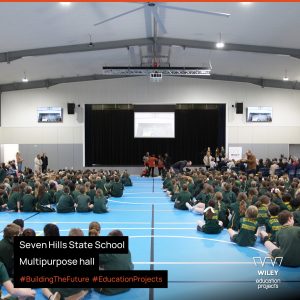
- Industry Type:
- Author: Andrew Newby
- Service Area:
- Date: 22 Sep 2011
Due to commercial growth or relocation of your existing operations, you are now responsible for selecting the most optimal site for a new Greenfield development. Where do you start?
Selecting the right piece of land can be a challenging task, fraught with unforeseen risks that, if unplanned for, can become costly in the long term. Often companies will buy the block of land first and worry about the operations best suited for it later. Experience in working with many clients over the years has strengthened our belief that it is worth investing time and effort early to ensure your site will be the best fit for your operations.
Consider your long term commercial goals and start where you want to finish.
Approaching a Greenfield project is an opportune time to plan for the future of your business. Gain internal feedback from your Operational and Engineering Managers in order to make informed decisions that will support your commercial goals. Assessing current floor area requirements, factory layout and process flows will assist you in sourcing a block with dimensions that best suit your current operations and allow for future growth.
A scaled sketch can be developed from this initial internal research. Your building design should facilitate the most efficient engineering process and in turn, your block of land should facilitate the most efficient building design.
Draw an outline around your facility and logistics sketch to obtain your minimum site area. You now have a basic concept of the most efficient size and shape of land required.
Once you have worked out what the ideal facility looks like on paper, use your internal research results to determine current and future truck queuing, turning and parking on the site and general transport and logistics requirements.
Safety regulations and service requirements should also be allowed for in the initial concept. For example, large buildings require fire access roads around them, requiring more land. It is often helpful to seek external expertise regarding fire safety, building codes compliance and town planning.
Everyone has heard of the term Location, Location, Location. This is possibly the most important consideration when buying land for any purpose.
Many relocating companies select land close to their current operations to retain staff. Other considerations can include the location of target markets and suppliers or your operations may require a location close to main transport links such as interstate freeways, a port or airport.
A block of land in a cheap location may initially seem like a golden opportunity, but it will soon prove to be fool’s gold if you have not considered the long term cost implications of transport and logistics.
If you have a shortlist of suitable sites to select from, invest time in preparing a matrix comparing advantages and disadvantages of each and ensure you always refer back to your future commercial and operational goals—don’t fall into the trap of selecting sites that only suit your current operations.
Market forces or business growth may demand change sooner than originally planned and you will have effectively wasted your time and money and still find yourself back at square one.
It is important to have a solid understanding of the surrounding operations, that is, get to know your neighbours. It is not advisable to build a facility with stringent hygienic operations next door to an operation which, by its operational nature, emits dust and pollutants into the surrounding atmosphere.
How does your operation affect the local environment? Consider buying additional land as a buffer to protect against complaints from nearby residents.
The slope of the land to the human eye can be quite deceiving. A slope of 1 in 100 (1m over a distance of 100m) is preferred. Steeper slopes will add to earthworks costs. To ensure a positive, cost efficient outcome, it is beneficial to carry out thorough investigations and base your decision on measured data.
Good ground conditions (150 kPa minimum bearing capacity) will generally mean high level footings. Poor ground conditions will lead to expensive deep footings such as piers or piles. Evidence of filling or close proximity to rivers and creeks are good indicators that deep footings will be required.
Believe it or not, land cost is one of the final considerations. Cost should be considered against all the other factors mentioned. Factors adding to the overall development cost may include irregular shapes, steep land contours, previous soil contamination, poorly compacted fill, poor soil conditions and infrastructure services not available to the site.
You might look for sites in industrial estates which adopt the concept of shared infrastructure. Services such as energy, waste treatment, process services and product distribution are handled by central service providers, lowering unit costs for all the manufacturers in the estate.
Our understanding of your facility and property needs go far beyond that of any general real estate agents, developers, investors and institutional owners. Wiley offer strategic advice to select the site and develop the facility.
This means securing the best available location to suit your business and workforce needs and achieving a design that meets your needs today and into the future.
About the Author
Andrew Newby is the Business Development Director at Wiley and can be contacted on 1300 385 988 or email connect@wiley.com.au.
Further information
Use our SITE SELECTION CHECKLIST to help find your promised land.
Download to read full article
To read this document you will need Adobe Reader


